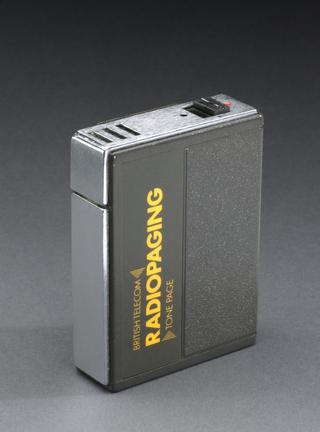
A.B.C. telegraph transmitter, 1835-1845




Magneto-electric ABC transmitter, patented by Charles Wheatstone and William Fothergill Cooke, British, around 1840.
Charles Wheatstone was always interested in developing electric telegraph systems that did not require knowledge of a code. The ABC telegraph worked like a rotary telephone dial and could be used with little training. To transmit, letters were selected by pressing the appropriate buttons and rotating the handle continuously. The indicator stepped round the dial until the desired letter was reached, sending the correct number of electrical impulses to the receiver whose indicator stepped round in unison. It was slow, only transmitting 15 words a minute, but was simple to use.
Details
- Category:
- Telecommunications
- Object Number:
- 1949-315
- Materials:
- wood (unidentified), metal (unknown) and brass (copper, zinc alloy)
- Measurements:
-
overall: 300 mm x 450 mm, 15.5kg
- type:
- telegraph
- copyright:
- King's College London
- credit:
- Lent by King's College London




